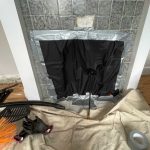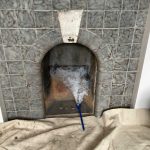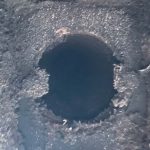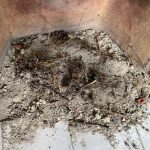C
Chimney Sweeping
There’s nothing cosier and more relaxing than sitting in front of the fire.
It’s extremely important to ensure your fireplace is safe as it can be. According to the National Association of Chimney Sweeps (NACS), you need to get a chimney sweep and inspection at least once a year. This varies depending on the particular use you give to your chimney, so sometimes a chimney sweep is needed more than once a year.
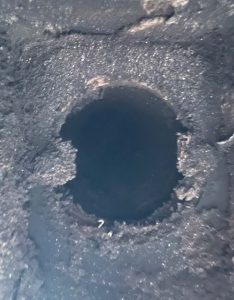
A chimney sweep is a reliable way to prevent a chimney fire…
Your chimney is a significant ventilation system that allows smoke, toxins, and dangerous fumes to escape the home. With a clean chimney, all these dangerous fumes can freely leave your house. With time, creosote appears in a dirty chimney. Creosote is a black, sticky residue that is left inside your chimney when the wood is burned or when there isn’t enough ventilation. Creosote is highly flammable, making it one of the main causes of chimney fires.
Birds are known to sometimes place their nests inside chimneys, the dry twigs, leaves, and debris can spark a devastating fire quite easily.
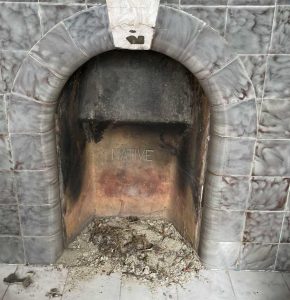
A clean chimney also means a more effective heating system. With better ventilation, you need less fuel to have a warm and safe chimney fire
With better air circulation, you have a more efficient chimney. Sweeping your chimneys regularly can also prevent future damage that can be quite costly. Since soot accumulates around the flue, the grime prevents the flue from freely directing the smoke upwards. Subsequently, your furniture could be damaged by a layer of soot, and a black film could cover the hearth and around your chimney, staining it, and making it almost impossible to remove.
Our Sweeping Process...
Our process is to keep you and your home as safe as possible, below we outline our basic process for a standard sweep…
Step 1: First, we will visually inspect your outside chimney to identify any risks or defects.
Step 2: Our sweep will put down floor sheets and hearth sheets to protect your home as much as possible.
Step 3: We will inspect the appliance and remove any parts that are needed to access the flu/chimney. All parts will be inspected for defects.
Step 4: Once all the parts are removed, our sweep will do a visual inspection up into the flu/chimney to see what type of build-up has formed.
Step 5: Once the appliance and chimney have been inspected, your sweep will start to seal the appliance with a soot sheet to stop any derby and soot from entering the home. At the same time, a specialist hover will be latched to the appliance and switched on.
Step 6: Once everything is secured, the chimney sweep will start to insert the sweeping brush and rods, sweeping on the way up or/and on the way down, removing as much soot and creosote as possible. All the debris and soot will be hovered up as soon as the sweeping has started.
Step 7: Once the appliance and chimney have been swept our sweep will do a smoke evacuation check, to make sure any smoke in the appliance is making its way up the chimney and out of the building.
Step 8: If everything is safe and secure and the chimney sweep was successful then the sweep will issue an insurance approved NASC certificate. If however the chimney sweep was unsuccessful or defects found then a Warning notice will be issued, and full details as to why the chimney cannot be used will be supplied.

